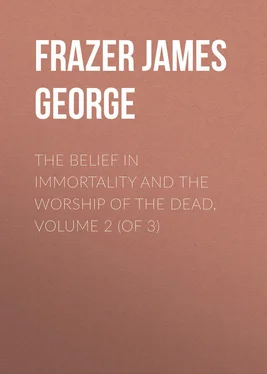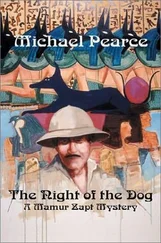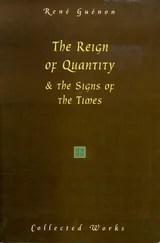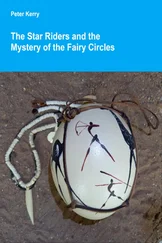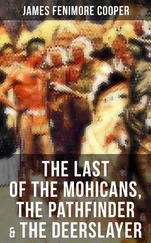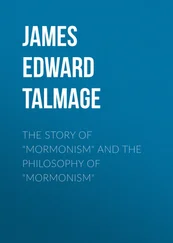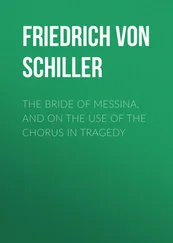James Frazer - The Belief in Immortality and the Worship of the Dead, Volume 2 (of 3)
Здесь есть возможность читать онлайн «James Frazer - The Belief in Immortality and the Worship of the Dead, Volume 2 (of 3)» — ознакомительный отрывок электронной книги совершенно бесплатно, а после прочтения отрывка купить полную версию. В некоторых случаях можно слушать аудио, скачать через торрент в формате fb2 и присутствует краткое содержание. Жанр: foreign_antique, foreign_prose, на английском языке. Описание произведения, (предисловие) а так же отзывы посетителей доступны на портале библиотеки ЛибКат.
- Название:The Belief in Immortality and the Worship of the Dead, Volume 2 (of 3)
- Автор:
- Жанр:
- Год:неизвестен
- ISBN:нет данных
- Рейтинг книги:3 / 5. Голосов: 1
-
Избранное:Добавить в избранное
- Отзывы:
-
Ваша оценка:
- 60
- 1
- 2
- 3
- 4
- 5
The Belief in Immortality and the Worship of the Dead, Volume 2 (of 3): краткое содержание, описание и аннотация
Предлагаем к чтению аннотацию, описание, краткое содержание или предисловие (зависит от того, что написал сам автор книги «The Belief in Immortality and the Worship of the Dead, Volume 2 (of 3)»). Если вы не нашли необходимую информацию о книге — напишите в комментариях, мы постараемся отыскать её.
The Belief in Immortality and the Worship of the Dead, Volume 2 (of 3) — читать онлайн ознакомительный отрывок
Ниже представлен текст книги, разбитый по страницам. Система сохранения места последней прочитанной страницы, позволяет с удобством читать онлайн бесплатно книгу «The Belief in Immortality and the Worship of the Dead, Volume 2 (of 3)», без необходимости каждый раз заново искать на чём Вы остановились. Поставьте закладку, и сможете в любой момент перейти на страницу, на которой закончили чтение.
Интервал:
Закладка:
The name which the natives give to this megalithic monument is Haamonga or Ho ha Mo-nga Maui , which is said to mean "Maui's burden." The name is explained by a story that the god or hero Maui brought the massive stones in a gigantic canoe from Uea (Wallis Island), where the great holes in the rock from which he quarried them may still be seen. From the canoe he bore them on his back to the spot where they now stand. 308 308 Charles Forbes, in Archaeologia , xxxv. 496 (who gives Ho ha Mo-nga Maui as the name of the stones); (Sir) Basil Thomson, Diversions of a Prime Minister , p. 382; id. , "Notes upon the Antiquities of Tonga," Journal of the Anthropological Institute , xxxii. (1902) p. 81 (who gives Haamonga as the native name of the stones).
This story can hardly be thought to throw much light on the origin of the monument; for the natives are in the habit of referring the marvels which they do not understand to the action of the god or hero Maui, just as the ancient Greeks fathered many natural wonders on the deified hero Hercules. 309 309 (Sir) Basil Thomson, "Notes upon the Antiquities of Tonga," Journal of the Anthropological Institute , xxxii. (1902) p. 81. Maui is the great hero of Polynesia, known in nearly every group of islands, generally regarded as a demigod or deified man, but sometimes and in some places rising to the dignity of full godhead. He appears, says Mr. E. Tregear, to unite the classical attributes of Hercules and Prometheus. See E. Tregear, Maori-Polynesian Comparative Dictionary , p. 233, s. v. "Maui."
But from Mateialona, Governor of Haapai and cousin of the King of Tonga, Sir Basil Thomson obtained a tradition of the origin of the stones which is at least free from the miraculous element and connects the monument with Tongan history. The account runs thus: "Concerning the Haamonga of Maui, they say forsooth that a Tui Tonga (the sacred line of chiefs), named Tui-ta-tui, erected it, and that he was so named because it was a time of assassination. 310 310 " Tui-ta-tui, lit. 'King-strike-King.'"
And they say that he had it built for him to sit upon during the Faikava (ceremony of brewing kava), when the people sat round him in a circle, and that the king so dreaded assassination that he had this lordly seat built for himself that he might sit out of the reach of his people. And this, they say, is the origin of the present custom of the Faikava, it being now forbidden for any one to sit behind the king." At such wassails the presiding chief sits at the apex of an oval. To this tradition Sir Basil Thomson adds: "Mr. Shirley Baker told me that he believed the Haamonga to have been erected as a fakamanatu (memorial) to the son of some Tui Tonga, a view that finds support in the fondness of Tongan chiefs for originality in the burial ceremonies of their near relations – witness Mariner's account of the funeral of Finau's daughter – but on the other hand native traditions generally have a kernel of truth, and the legend of Tui-ta-tui and its consequences finds an analogy in our own custom of guarding against an assassin's dagger at the drinking of the loving cup." 311 311 (Sir) Basil Thomson, "Notes upon the Antiquities of Tonga," Journal of the Anthropological Institute , xxxii. (1902) p. 82.
The tradition receives some confirmation from the bowl-like hollow on the upper surface of the cross-stone; for the hollow might have served as the king's drinking-cup to hold his kava at the customary wassails. Indeed, Mr. Philip Hervey, the first to examine the monument, describes the hollow in question as "a small cava bowl"; 312 312 Proceedings of the Society of Antiquaries of London , Second Series, ii. 77.
and after giving an account of the monument Mr. Brenchley adds: "Its history seems to be entirely unknown, but it is very natural to suppose from its form that it was connected with some ancient kava ceremonies." 313 313 Julius L. Brenchley, Jottings during the Cruise of H.M.S. "Curaçoa" among the South Sea Islands in 1865 (London, 1873), p. 132.
The tradition which connects the erection of the monument with the reign of a Tooitonga named Tui-ta-tui is further countenanced, if not confirmed, by a list of the Tooitongas, in which the name of Tui-ta-tui occurs as the eleventh in descent from the great god Tangaloa. 314 314 (Sir) Basil Thomson, Diversions of a Prime Minister , p. 395. In this work the author prints a list of the Tooitongas "as given by Mr. E. Tregear on the authority of the Rev. J. E. Moulton."
This Tui-ta-tui is believed to have reigned in the thirteenth or fourteenth century of our era. 315 315 (Sir) Basil Thomson, "Notes upon the Antiquities of Tonga," Journal of the Anthropological Institute , xxxii. (1902) p. 83; S. Percy Smith, Hawaiki , p. 158.
From the size and style of the masonry Sir Basil Thomson is disposed to assign the monument to a later date. He points out that for the quarrying and mortising of stones that weigh some fifty tons apiece the craft of stone-cutting must have been fully developed; and from a comparison of the megalithic tombs of the Tooitongas which can be approximately dated, he infers that the craft of stone-cutting in Tonga reached its culmination at the end of the seventeenth century, though it was still practised down to the beginning of the nineteenth century; for Mariner tells us that in his time a professional class of masons was set apart for building the stone sepulchral vaults of chiefs. 316 316 W. Mariner, Tonga Islands , ii. 266. As to the size of the stones, Mariner says, "The stones used for this purpose are about a foot in thickness, and are cut of the requisite dimensions, out of the stratum found on the beaches of some of the islands."
Yet on the whole Sir Basil Thomson concludes that "when one is left to choose between a definite native tradition on the one hand and probability on the other for the assignment of a date, I would prefer the tradition. If the Tongans had invented the story as a mere expression for antiquity they would not have pitched upon Tui-ta-tui, about whom nothing else is recorded, in preference to Takalaua, Kau-ulu-fonua-fekai, or any of the kings who loom large in traditionary history. Whether the Haamonga was built for a throne or for a memorial, doubtless it is connected with the reign of Tui-ta-tui, who lived in the fourteenth century." 317 317 (Sir) Basil Thomson, "Notes upon the Antiquities of Tonga," Journal of the Anthropological Institute , xxxii. (1902) pp. 83 sq.
As an alternative to the view that the hollow on the cross-stone was a kava bowl Dr. Rivers suggests that it "may have been destined to receive the skull and other bones of the dead, so often preserved in Polynesia." 318 318 W. H. R. Rivers, History of Melanesian Society , ii. 431.
The suggestion accords well with the opinion that the monument is a memorial of the dead, and it might be supported by the Samoan practice of severing a dead chief's head from his body and burying it separately, to save it from being dug up and desecrated by enemies in time of war. 319 319 See below, p. 212 .
However, Dr. Rivers is careful to add that such a practice is not recorded in Tonga and appears to be incompatible with the mode of sepulture which prevails there.
In this connexion another megalithic monument of the Tonga islands deserves to be considered, though it appears to have been commonly overlooked. It was observed by Captain Cook in the island of Lefooga (Lifuka). He says: "Near the south end of the island, and on the west side, we met with an artificial mount. From the size of some trees that were growing upon it, and from other appearances, I guessed that it had been raised in remote times. I judged it to be about forty feet high; and the diameter of its summit measured fifty feet. At the bottom of this mount stood a stone, which must have been hewn out of coral rock. It was four feet broad, two and a half thick, and fourteen high; and we were told by the natives present, that not above half its length appeared above ground. They called it Tangata Arekee ; 320 320 " Tangata , in their language, is man; Arekee , king."
and said, that it had been set up, and the mount raised, by some of their forefathers, in memory of one of their kings; but how long since, they could not tell." 321 321 Captain James Cook, Voyages , v. 298 sq. To this description of the monument Sir Basil Thomson has called attention; he rightly classes it with the tombs of the chiefs. See his "Notes upon the Antiquities of Tonga," Journal of the Anthropological Institute , xxxii. (1902) p. 85.
Интервал:
Закладка:
Похожие книги на «The Belief in Immortality and the Worship of the Dead, Volume 2 (of 3)»
Представляем Вашему вниманию похожие книги на «The Belief in Immortality and the Worship of the Dead, Volume 2 (of 3)» списком для выбора. Мы отобрали схожую по названию и смыслу литературу в надежде предоставить читателям больше вариантов отыскать новые, интересные, ещё непрочитанные произведения.
Обсуждение, отзывы о книге «The Belief in Immortality and the Worship of the Dead, Volume 2 (of 3)» и просто собственные мнения читателей. Оставьте ваши комментарии, напишите, что Вы думаете о произведении, его смысле или главных героях. Укажите что конкретно понравилось, а что нет, и почему Вы так считаете.
